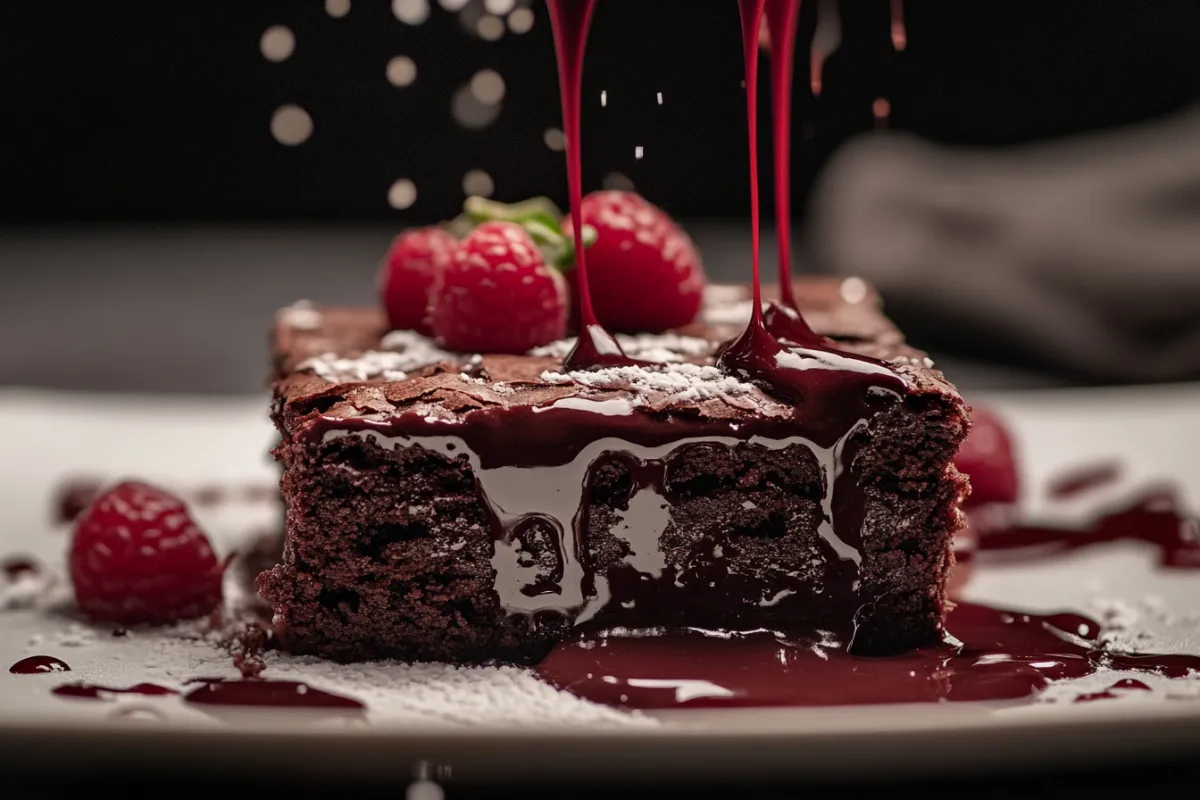When it comes to brownies, everyone has a preference. Some prefer their brownies dense and rich, while others enjoy them light and fluffy. The main difference between fudgy and cakey brownies comes down to the ingredients and techniques used in the recipe. Whether you’re aiming for gooey perfection or a more sponge-like treat, understanding what makes a brownie fudgy or cakey can elevate your baking game.
The Science Behind Brownies
Before we dive into the key differences, let’s first explore the science of brownie baking. The texture of brownies is affected by the fat-to-flour ratio, the type of chocolate, and the use of leavening agents. Fudgy brownies tend to have more butter, chocolate, and sometimes an extra egg yolk, while cakey brownies rely on a higher flour content and sometimes baking powder.
Related: If you’re experimenting with brownie recipes, understanding why your brownies may turn cakey is critical.
What Makes a Brownie Fudgy?
1. Higher Fat Content
Fudgy brownies have a higher fat content relative to their flour content. The fat usually comes from butter and chocolate, which gives the brownie its gooey, rich texture.
Key ingredients for fudginess include:
- Butter: Typically melted before combining with other ingredients.
- Chocolate: High-quality, melted chocolate helps to form a dense texture.
- Less Flour: The low flour content ensures that the brownies remain moist rather than dry.
Land O’Lakes has a fantastic guide about how these ingredients impact your brownie results.
2. Minimal Leavening Agents
Fudgy brownies rarely use baking powder or baking soda, as these agents would make the brownies rise, turning them more into a cake. The dense texture of fudgy brownies is a result of this absence, which keeps the brownies from puffing up too much during baking.
What Makes a Brownie Cakey?
On the other hand, cakey brownies are lighter and more airy due to their higher flour content and use of leavening agents.
1. More Flour
Cakey brownies use a higher amount of flour compared to their fudgy counterparts. This increases the gluten development, which contributes to a more structured and less gooey texture.
Key ingredients for cakey brownies include:
- Flour: A more significant amount of flour creates structure.
- Baking Powder: Helps the batter rise, giving the brownie a more cake-like texture.
If you’re interested in learning more about the importance of flour in brownie texture, check out this detailed guide.
2. Whole Eggs and Whisking
Cakey brownies often call for whole eggs and sometimes even an additional whipped egg white, which contributes to the airy texture. Whisking the eggs before adding them to the batter incorporates air, making the brownies rise more in the oven.
Real Simple’s guide provides insights into adjusting egg quantities to modify the texture.
Techniques for Achieving Fudgy or Cakey Brownies
How to Make Fudgy Brownies
To achieve the perfect fudgy brownie, you need to focus on the following techniques:
- Use more butter or oil than flour.
- Include melted chocolate for a rich, dense texture.
- Reduce or eliminate baking powder to avoid a cakey rise.
- Bake for a shorter time at a lower temperature to keep the center gooey.
For further guidance on keeping your brownies dense, visit this page on how to keep brownies fudgy.
How to Make Cakey Brownies
If you prefer your brownies to be more like cake, follow these steps:
- Use more flour and add baking powder to your batter.
- Whisk the eggs thoroughly to incorporate air into the batter, which helps the brownie rise.
- Bake for a slightly longer time at a moderate temperature to achieve the fluffy texture.
If you’re still struggling, you might find this article about what makes brownies puff up useful.
Recipe Modifications for Desired Texture
Turning Cakey Brownies into Fudgy Brownies
If you have a cakey brownie recipe but want to modify it for a fudgier texture, follow these tips:
- Reduce the flour: This limits the amount of gluten formation, resulting in a denser texture.
- Add more fat: Increase the butter or oil content to make the brownies moist and gooey.
- Underbake slightly: To keep the center fudgy, reduce the baking time by a few minutes.
For more tips on how to modify your recipes, refer to this guide on making brownies less cakey.
Turning Fudgy Brownies into Cakey Brownies
To achieve a cakey texture from a fudgy recipe, here are the adjustments you should make:
- Increase the flour: More flour gives structure to the brownies.
- Add baking powder: A small amount of baking powder will help the brownies rise.
- Bake for longer: Baking the brownies for a more extended period helps set a cakey texture.
Frequently Asked Questions (FAQs)
1. What happens if I use too much flour?
Too much flour can make your brownies dry and crumbly, giving them a more bread-like texture. If this happens, your brownies are likely to come out more cakey than fudgy.
2. Can I substitute oil for butter in brownies?
Yes, but it will change the texture. Butter provides flavor and a rich texture, whereas oil tends to make brownies more moist and slightly denser. For example, in this guide, yogurt is sometimes used to substitute butter for a moist finish.
3. How do I fix brownies that are too dry?
You can add more fat, such as melted butter or oil, or try baking them for less time. The key is balancing the fat-to-flour ratio for a moist result.
4. Can I make brownies without eggs?
Yes, you can use alternatives like applesauce, flaxseed, or even Greek yogurt to replace eggs in brownies. These substitutes can change the texture slightly, so adjust other ingredients accordingly. Learn more about egg alternatives for brownies here.
Conclusion
Whether you prefer fudgy or cakey brownies, the secret lies in the ingredients and techniques used. By tweaking the amount of flour, fat, and eggs, you can create the perfect batch of brownies that suits your taste. Experiment with different ratios, and soon you’ll be making mouth-watering brownies every time.
For more baking tips, check out this Ultimate Guide to Brownie Texture, which dives deep into the science of achieving your preferred brownie texture.

